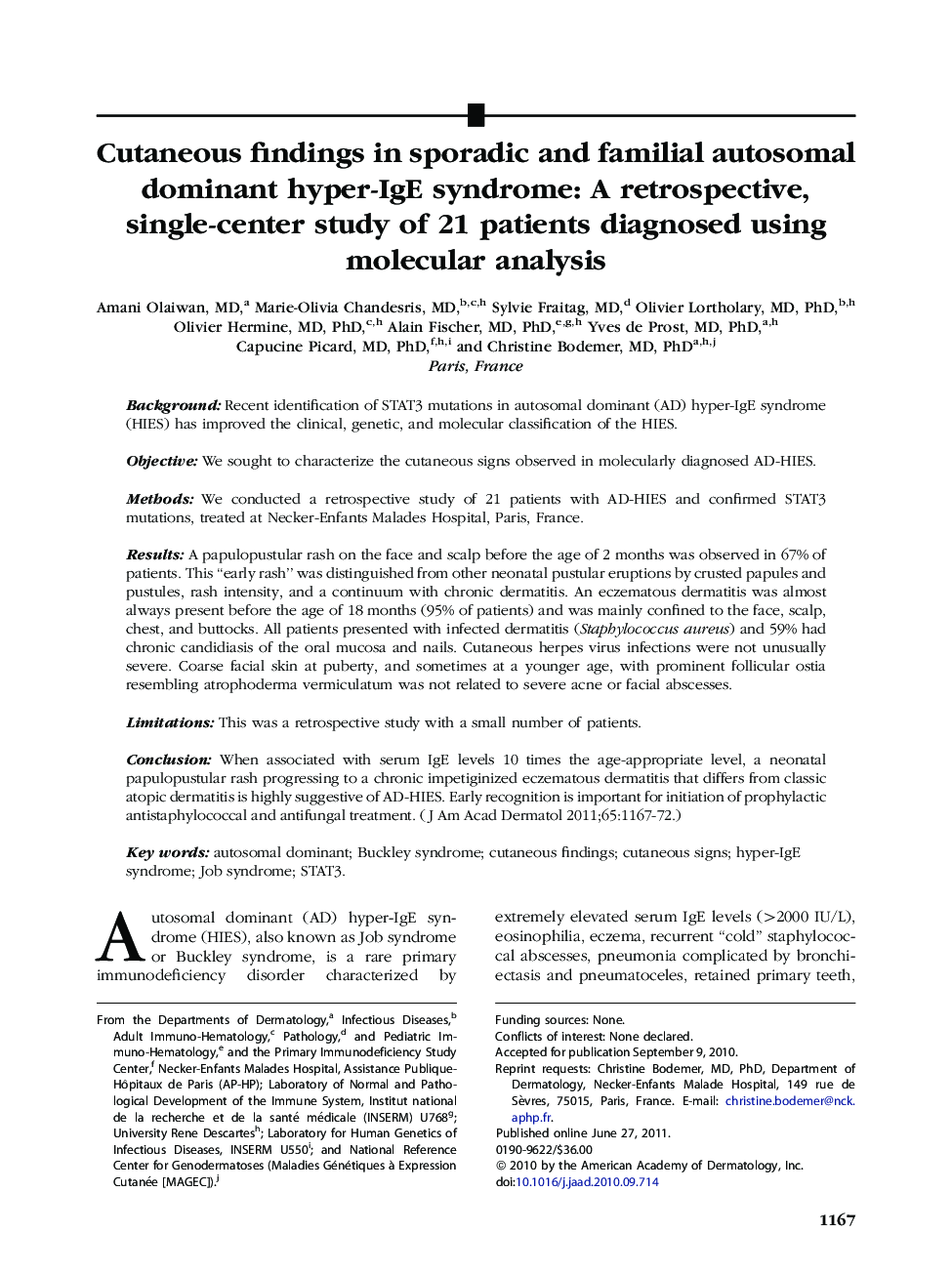| Article ID | Journal | Published Year | Pages | File Type |
|---|---|---|---|---|
| 3206592 | Journal of the American Academy of Dermatology | 2011 | 6 Pages |
BackgroundRecent identification of STAT3 mutations in autosomal dominant (AD) hyper-IgE syndrome (HIES) has improved the clinical, genetic, and molecular classification of the HIES.ObjectiveWe sought to characterize the cutaneous signs observed in molecularly diagnosed AD-HIES.MethodsWe conducted a retrospective study of 21 patients with AD-HIES and confirmed STAT3 mutations, treated at Necker-Enfants Malades Hospital, Paris, France.ResultsA papulopustular rash on the face and scalp before the age of 2 months was observed in 67% of patients. This “early rash” was distinguished from other neonatal pustular eruptions by crusted papules and pustules, rash intensity, and a continuum with chronic dermatitis. An eczematous dermatitis was almost always present before the age of 18 months (95% of patients) and was mainly confined to the face, scalp, chest, and buttocks. All patients presented with infected dermatitis (Staphylococcus aureus) and 59% had chronic candidiasis of the oral mucosa and nails. Cutaneous herpes virus infections were not unusually severe. Coarse facial skin at puberty, and sometimes at a younger age, with prominent follicular ostia resembling atrophoderma vermiculatum was not related to severe acne or facial abscesses.LimitationsThis was a retrospective study with a small number of patients.ConclusionWhen associated with serum IgE levels 10 times the age-appropriate level, a neonatal papulopustular rash progressing to a chronic impetiginized eczematous dermatitis that differs from classic atopic dermatitis is highly suggestive of AD-HIES. Early recognition is important for initiation of prophylactic antistaphylococcal and antifungal treatment.
